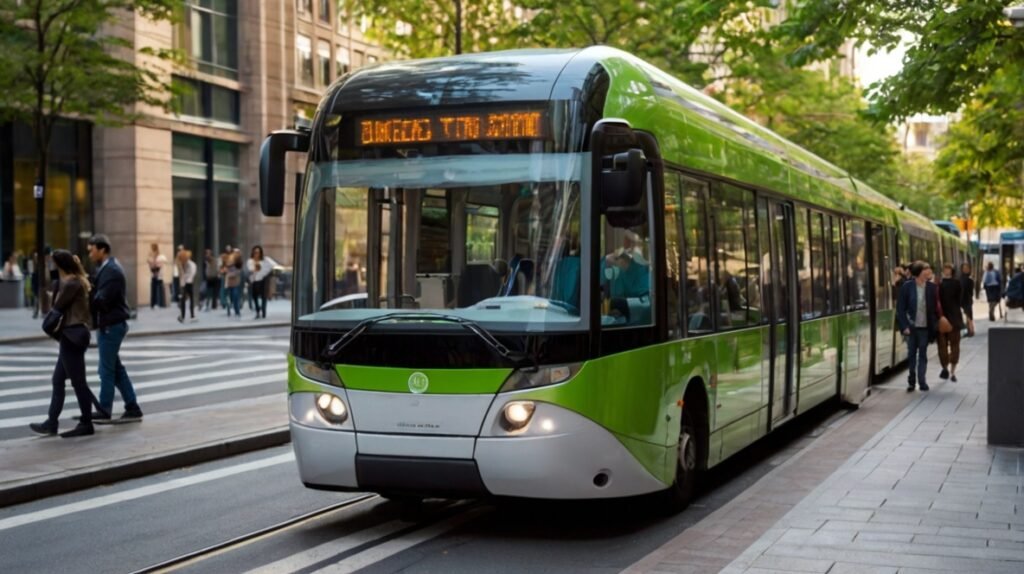Sustainable Urban Transportation Trends

Sustainable transportation is becoming increasingly essential in urban areas due to its significant impact on air pollution, CO2 emissions, and public health. By implementing sustainable means of transport, cities can transform their landscapes, creating greener, more livable environments. This transformation is driven by current trends that prioritize eco-friendly solutions, such as the rise of electric vehicles, shared mobility services, and innovative public transportation systems. As urban areas continue to grow, embracing these trends is vital for ensuring a sustainable future.
Electric Vehicles and Infrastructure
The rise of electric vehicles (EVs) as a sustainable option for urban transport is transforming city landscapes. With advancements in battery technology, EVs have become more accessible, offering effective solutions to combat climate change. Governments are increasingly supporting this shift through incentives and investments in charging infrastructure.
As the market expands, the number of charging stations is projected to grow from 4 million today to an estimated 35 million by 2030, facilitating a rise in EV adoption expected to reach 27 million vehicles by the same year. This growth is crucial for reducing range anxiety among potential EV owners.
“The future of urban transport lies in the widespread adoption of electric vehicles, supported by robust charging infrastructure.” – Industry Expert
| City | EV Adoption Rate (%) |
|---|---|
| San Francisco | 12% |
| Los Angeles | 9% |
| New York City | 7% |
| Brooklyn Heights | 15% |
Data indicates that neighborhoods with access to on-site parking, like Brooklyn Heights, show higher EV adoption rates. This highlights the need for improved charging solutions to enhance EV accessibility for urban dwellers.
Shared Mobility Services
The emergence of car-sharing and ride-hailing services is reshaping urban transportation. These services offer sustainable alternatives to traditional vehicle ownership, promoting flexibility and convenience. They also play a vital role in encouraging the use of public transport by providing last-mile solutions.
One of the most significant impacts of shared mobility is the reduction in the number of vehicles on the road. Studies reveal that every shared car can remove up to 15 privately owned vehicles from urban areas, leading to improved air quality and reduced greenhouse gas emissions.
“Shared mobility options are key in transitioning towards sustainable urban transport solutions.” – Research Study
Reduction of private car dependency
Cost-effective alternatives for urban residents
Alignment with evolving urban lifestyles
Statistical evidence highlights that younger generations prefer shared mobility due to its affordability and convenience. As a result, private car ownership is declining, showing a clear shift towards a sharing economy. This trend not only supports sustainable practices but also enhances urban living conditions.
Public Transportation Innovations

Innovations in public transportation are paving the way for a more sustainable future. Cities are increasingly investing in eco-friendly buses and trains, such as electric buses and zero-emission vehicles. These alternatives significantly reduce carbon emissions, contributing to cleaner urban air.
Moreover, the implementation of smart technologies in public transport systems enhances operational efficiency. Intelligent Public Transport Systems (IPTS) utilize tools like Automatic Vehicle Location (AVL) and Automatic Passenger Counting (APC) to streamline services and improve user experience. These advancements create real-time data insights, allowing transit agencies to make informed decisions.
Recent statistics illustrate the impact of these innovations on public transport adoption. For instance, in Lisbon, the introduction of the “Navegante” Integrated Tariff System led to a remarkable 42% increase in ridership compared to 2018. Such data underscores the potential of sustainable innovations to transform urban landscapes and encourage a modal shift from private vehicles to public transport.
Micro-Mobility Solutions
The rise of electric scooters and bicycles as last-mile solutions is transforming urban transportation. These micro-mobility options are becoming increasingly popular due to their sustainability and cost-effectiveness. They are particularly advantageous for short-distance travel, helping to reduce the reliance on traditional gasoline-powered vehicles.
Some key benefits of micro-mobility include:
Enhancing commute efficiency, allowing users to navigate congested urban areas quickly.
Reducing traffic congestion by occupying less space than cars, which leads to smoother traffic flow.
Providing economic advantages by offering affordable alternatives to personal vehicle ownership.
According to the NACTO’s Shared Micromobility Report, there were 130 million trips taken on shared bikes and e-scooters in North America in 2022, marking a significant increase from previous years. This trend reflects a growing acceptance of micro-mobility solutions.
As the city mayor noted, “Embracing micro-mobility is crucial for reducing our carbon footprint and enhancing urban mobility.” With continued investments and supportive policies, the future of urban transport looks promising.
Urban Planning and Sustainable Transportation
Urban planning plays a crucial role in establishing sustainable transportation networks. Effective strategies, such as developing cycling infrastructure and enhancing public transportation systems, reduce reliance on private vehicles. This shift not only minimizes greenhouse gas emissions but also promotes walking and cycling, significantly improving urban air quality.
Integrating green spaces and pedestrian-friendly areas is essential for creating livable cities. By designing urban environments that prioritize accessibility and sustainability, cities can foster healthier lifestyles and enhance community well-being. For instance, studies show that urban areas with ample green spaces can reduce temperatures by up to 5°F, combatting heat island effects.
Successful examples of sustainable urban planning include Copenhagen’s extensive cycling infrastructure and New York’s CitiBike program. These cities demonstrate how integrating eco-friendly transportation options fosters a culture of sustainability and enhances urban livability.
FAQ on Sustainable Transportation Trends
Q: What are the primary benefits of sustainable transportation? A: Sustainable transportation reduces greenhouse gas emissions, improves air quality, and enhances urban livability by promoting walking, cycling, and public transit. These benefits are essential for creating livable cities.
Q: How does urban planning affect sustainable transportation? A: Urban planning is crucial for integrating eco-friendly transportation options. It promotes the development of cycling infrastructure and efficient public transport systems, which are essential for reducing reliance on private vehicles.
Q: Are electric vehicles the only solution for sustainable transport? A: No, while electric vehicles are important, sustainable transport also includes public transit, biking, walking, and shared mobility services. These options collectively minimize environmental impact.
“Sustainable transportation is not just about reducing emissions; it’s about creating livable cities where community engagement and green spaces thrive,” says a leading transportation expert.
Q: What challenges do cities face in implementing sustainable transportation? A: Common challenges include funding constraints, community resistance, and the need for public education on the benefits of sustainable options. Cities like New York and Bogotá illustrate these challenges and opportunities.
https://blissfullway.com/essential-investing-strategies-for-beginners/
Conclusion
In conclusion, sustainable transportation trends are reshaping urban environments for the better. From the rise of electric vehicles and shared mobility services to innovations in public transport and micro-mobility solutions, these trends are vital for reducing emissions and enhancing urban livability. The integration of green spaces and community engagement further underscores the importance of planning for sustainable transport. As cities continue to evolve, prioritizing eco-friendly transportation will be essential for creating healthier, more resilient urban landscapes. Embracing these trends paves the way for a sustainable future, ensuring that urban development meets the needs of both people and the planet.







